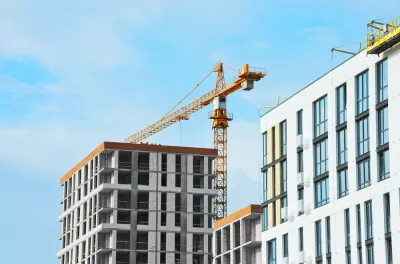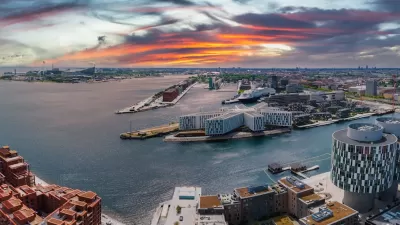A study of over a million Chicago buildings assessed their ‘embodied carbon’ footprint over their lifetimes, showing that demolishing an old building in favor of a new one almost always produced more emissions.

A study of embodied carbon — carbon emissions produced over the entire life cycle of a product — produced by buildings found that retrofitting existing buildings produces significantly lower emissions over the entire life cycle, reports Nish Amarnath in Smart Cities Dive.
As a result, demolishing an existing building to construct a new one makes little sense from an environmental perspective, even if that new building is more energy efficient, according to the research note.
According to Amarnath, understanding the total carbon impacts of a building is difficult in the United States due to a lack of a comprehensive building inventory and building-level data as well as no clear benchmarks for assessing embodied carbon.
The researchers used data from over 1 million Chicago buildings to show that “increasing the average lifespan of buildings from 50 years to 75 or 80 years and reducing building size by 20% can cut their overall carbon emissions by two-thirds.” Buildings with masonry structures and walls have the highest emissions over their life cycle, while buildings with wooden structural elements and shingled roofs have the lowest emissions.
The researchers acknowledge the challenges of retrofitting older buildings, noting that some energy efficiency upgrades can also increase the overall production of embodied carbon. “If the goal is to enhance energy efficiency and achieve long-term cost savings, upgrading the HVAC system and improving the building envelope should be prioritized.”
FULL STORY: Retrofits more effective in cutting operational, embodied carbon emissions than new builds: study

Alabama: Trump Terminates Settlements for Black Communities Harmed By Raw Sewage
Trump deemed the landmark civil rights agreement “illegal DEI and environmental justice policy.”

Planetizen Federal Action Tracker
A weekly monitor of how Trump’s orders and actions are impacting planners and planning in America.

The 120 Year Old Tiny Home Villages That Sheltered San Francisco’s Earthquake Refugees
More than a century ago, San Francisco mobilized to house thousands of residents displaced by the 1906 earthquake. Could their strategy offer a model for the present?

Ken Jennings Launches Transit Web Series
The Jeopardy champ wants you to ride public transit.

BLM To Rescind Public Lands Rule
The change will downgrade conservation, once again putting federal land at risk for mining and other extractive uses.

Indy Neighborhood Group Builds Temporary Multi-Use Path
Community members, aided in part by funding from the city, repurposed a vehicle lane to create a protected bike and pedestrian path for the summer season.
Urban Design for Planners 1: Software Tools
This six-course series explores essential urban design concepts using open source software and equips planners with the tools they need to participate fully in the urban design process.
Planning for Universal Design
Learn the tools for implementing Universal Design in planning regulations.
Clanton & Associates, Inc.
Jessamine County Fiscal Court
Institute for Housing and Urban Development Studies (IHS)
City of Grandview
Harvard GSD Executive Education
Toledo-Lucas County Plan Commissions
Salt Lake City
NYU Wagner Graduate School of Public Service





























